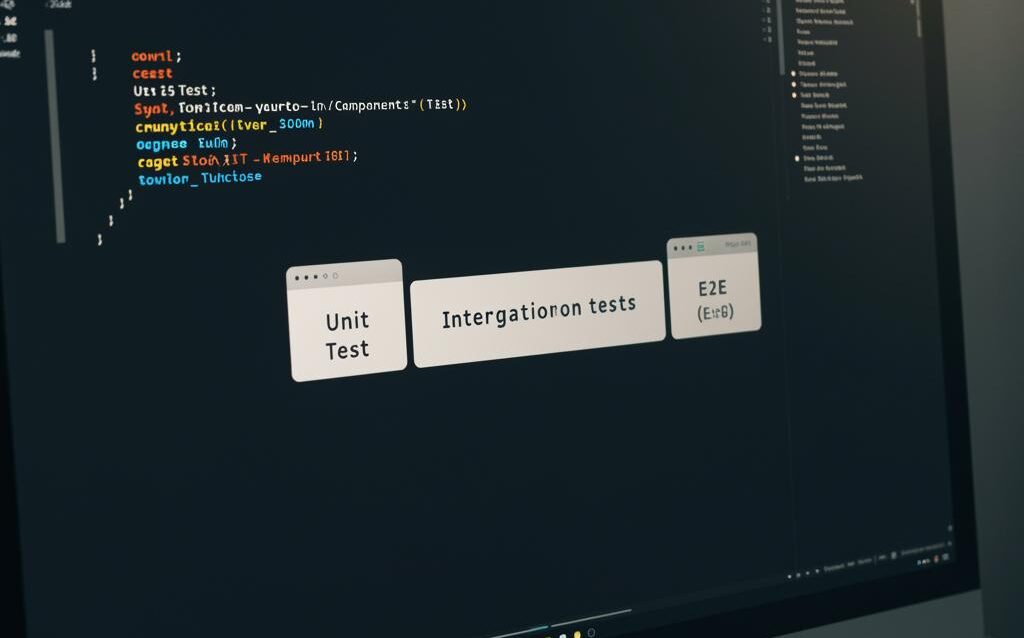Frontend Testing Strategies: Unit, Integration & E2E
Frontend Testing Strategies: Unit, Integration, and E2E Testing Approaches
In the dynamic world of web development, ensuring a robust and user-friendly frontend is paramount. Bugs and unexpected behavior can lead to a poor user experience, decreased engagement, and ultimately, lost revenue. Frontend testing plays a crucial role in mitigating these risks. This blog post will explore three essential testing strategies: unit testing, integration testing, and end-to-end (E2E) testing. Understanding and implementing these approaches will significantly improve the quality and reliability of your frontend applications.
Unit Testing: Testing in Isolation
What is Unit Testing?
Unit testing focuses on verifying the functionality of individual, isolated units of code. These units are typically functions, components, or modules. The goal is to ensure that each unit performs its intended task correctly, independently of other parts of the application.
Benefits of Unit Testing
- Early Bug Detection: Identifying issues early in the development process, making them easier and cheaper to fix.
- Improved Code Quality: Encourages developers to write modular, testable code.
- Faster Feedback Loops: Provides quick feedback on code changes, allowing for rapid iteration.
- Code Refactoring Confidence: Allows developers to refactor code with confidence, knowing that existing functionality will not be broken.
- Documentation: Unit tests can serve as a form of documentation, illustrating how individual units of code are expected to behave.
Practical Insights for Unit Testing
When writing unit tests, it’s crucial to:
- Write tests that are independent: Ensure that each test can run in isolation without relying on the state of other tests.
- Focus on testing one thing at a time: Each test should verify a single, specific aspect of the unit’s behavior.
- Use mock objects and stubs: Replace external dependencies with mock objects or stubs to isolate the unit under test.
- Cover all possible scenarios: Test both positive and negative cases, including edge cases and error conditions.
Integration Testing: Verifying Interactions
What is Integration Testing?
Integration testing focuses on verifying the interactions between different units or components of the frontend application. This involves testing how these units work together to achieve a specific functionality or feature. Unlike unit testing, integration testing examines the communication and data flow between multiple parts of the system.
Benefits of Integration Testing
- Detects Interface Errors: Identifies issues related to data passing, function calls, and overall communication between components.
- Validates Component Interactions: Ensures that components work together as expected to deliver desired functionality.
- Uncovers Integration Issues: Reveals problems that may not be apparent when units are tested in isolation.
- Provides a More Realistic Testing Environment: Simulates a more realistic environment compared to unit testing.
Practical Insights for Integration Testing
Effective integration testing requires:
- Top-Down or Bottom-Up Approach: Choose an appropriate integration strategy based on the application’s architecture.
- Define Clear Integration Points: Identify the key interfaces and communication points between components.
- Use Test Data Management: Ensure that test data is properly managed and consistent across tests.
- Monitor System Performance: Observe the performance of the integrated components to identify potential bottlenecks.
End-to-End (E2E) Testing: Simulating User Behavior
What is End-to-End (E2E) Testing?
End-to-end (E2E) testing simulates real user scenarios to validate the entire frontend application, including its interactions with backend services and databases. This type of testing verifies that the application functions correctly from start to finish, providing a comprehensive view of its overall performance and user experience.
Benefits of End-to-End (E2E) Testing
- Comprehensive Validation: Verifies the entire application workflow, ensuring that all components work together seamlessly.
- Real-World Scenario Simulation: Simulates real user interactions, providing a realistic assessment of the application’s performance.
- Detects Complex Bugs: Identifies issues that may not be apparent in unit or integration testing, such as timing issues or data inconsistencies.
- Improved User Experience: Helps to ensure that the application provides a positive and seamless user experience.
Practical Insights for End-to-End (E2E) Testing
To maximize the effectiveness of E2E testing:
- Define Clear Test Scenarios: Identify the most critical user workflows and create test cases that cover these scenarios.
- Use Automation Tools: Employ automation tools to streamline the testing process and ensure consistent test execution.
- Maintain Test Data: Ensure that test data is properly managed and reflects real-world scenarios.
- Monitor Test Execution: Track test execution results and identify areas for improvement.
- Consider Cross-Browser and Cross-Device Testing: Validate the application’s functionality across different browsers and devices to ensure compatibility.
Choosing the Right Testing Strategy
The optimal testing strategy involves a combination of unit, integration, and E2E testing. Unit tests provide a foundation for ensuring code quality, while integration tests verify the interactions between components. E2E tests provide a comprehensive view of the application’s overall functionality and user experience. The specific mix of these strategies will depend on the complexity of the application, the available resources, and the risk tolerance of the development team.
Conclusion
Frontend testing is an essential part of the software development lifecycle. By implementing a comprehensive testing strategy that includes unit, integration, and E2E testing, you can significantly improve the quality, reliability, and user experience of your frontend applications. Investing in testing upfront will save time and resources in the long run by preventing costly bugs and ensuring customer satisfaction. Remember to adapt your testing strategy to your specific project needs and continuously improve your testing process.

